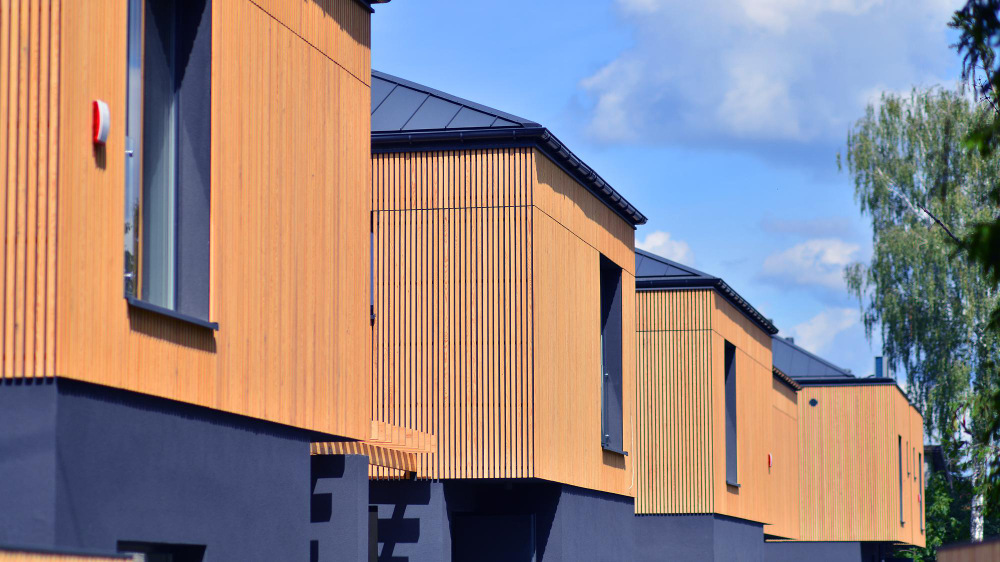Biowood, a composite wood product, is gaining recognition as a sustainable and effective alternative to traditional timber in various architectural and construction applications. This article explores the benefits of this material, focusing on its cost-effectiveness, durability, and environmental advantages.
Cost-Effectiveness
Biowood offers a compelling financial advantage over time. While the upfront cost may align with premium timber, its longevity and low maintenance significantly offset this initial expense. Unlike traditional wood, which is vulnerable to rot, insects, and weathering, this material is engineered to withstand harsh conditions. This durability minimizes the need for frequent repairs and replacements, resulting in substantial savings over the product’s lifespan.
Beyond its durability, this material’s low maintenance requirements contribute to its cost-effectiveness. Simple cleaning is often sufficient to maintain its appearance, eliminating the need for costly treatments or refinishing. These factors combined make this product a financially sound choice for both homeowners and businesses seeking long-term value and reduced upkeep costs.
Durability
Water Resistance
This product’s exceptional water resistance (less than 0.05% water absorption) is a key factor in its durability. This property prevents issues like warping and swelling, which commonly affect natural wood when exposed to moisture. This makes it an ideal choice for outdoor applications where it will be subjected to varying weather conditions.
Pest Resistance
It is inherently termite resistant, providing protection against wood-destroying insects. This characteristic, combined with its resistance to rot and cracking, makes it a safe and long-lasting material for various environments, including those prone to pests and moisture.
Safety
This makes it flame retardant in addition to being pest resistant, making it even safer for use in construction. This contributes to the safety regarding fire and protection of property and people.
Longevity and Low Maintenance
Water resistance, pest resistance, and flame retardancy combined ensure the exceptional durability of this material. Therefore, this will resist harshest weather conditions and maintain an excellent appearance over time without frequent replacement or repairs, reducing the long-term cost and maintenance effort.
Environmental Benefits
Forever Recycled, Always Renewable
It is manufactured from PEFC-certified recycled wood products, which have to pass through the most stringent sustainably harvested recycled product lines. This ensures that the wood recycled for manufacturing this material originates from responsibly harvested and managed forests.
Sustainable building practices
The presence of recycled wood works towards Biowood’s objectives to see sustainable building practices. It reduces the demand for newly harvested timber, thus saving forests along with its ecosystems.
Partners in fighting deforestation
With Biowood, clients stop deforestation, one of the most grievous environmental crimes facing modern civilization. The reprocessed wood reduces the need for logging.
Eco-friendly materials
This product spells eco-friendliness through the use of such recycled raw materials in its process. This aligns with emerging trends and emphasis on sustainable and environmentally responsible building materials.
Environmentally-friendly manufacturing process
The entire course of manufacturing this product is designed to ensure that it does less harm to the environment. The company tries as much as possible to reduce energy consumption, waste, and emissions to make the production cycle greener.
Circular Economy and Consumer Appeal
Consistent with international green building objectives
Biowood’s commitment to sustainability fits into the objectives set by international green building initiatives. Works on mitigation of the harmful impacts of the built environment with sustainable design, construction, and operation. By incorporating recycled materials and thereby reducing its ecological footprint, this product directly contributes to these objectives and therefore becomes a favorite for environmentally sensitive builders and developers.
Recyclable, can be reprocessed
Long-term recyclability and re-processing are certainly among the more important strong points that this material has over other products. These products can be remanufactured into new products at the end of their useful life. This ensures that they will not be sent to the landfill and therefore conserve natural resources, decrease waste, and reduce the total environmental footprint of the product.
Green Consumer Marketability
Consumers who are highly concerned with sustainability love Biowood for this reason. Having this product means that they are actively contributing towards helping the environment while not having to sacrifice their desired aesthetic appeal. This contains recycled content and low environmental impact, fitting with what people want to see in making conscious choices for the betterment of the planet.
Wood-like appearance with low carbon footprint
This product presents an exciting answer to everyone who loves the naturality in wood yet seeks to reduce their ‘carbon footprint.’ It resembles traditional wood, with an appearance that evokes warmth. Contrasted with traditional wood, though, Biowood is fabricated from entirely recycled materials, which significantly helps reduce carbon emissions related to deforestation and wood processing. Such a combination of looks and sustainability has provided this product with appeal for many environmentally conscious homeowners and designers.
Key Takeaway
Biowood is an exciting alternative to conventional wood products with respect to cost, durability, and sustainability. It will not rot like regular lumber and is also very resistant to moisture, pests, and fire, besides being very low maintenance. This makes it quite favorable to most house owners and builders. With the growing popularity of sustainable building products, Biowood remains one of the most viable options that can satisfy both the aesthetic and functional requirements of a modern building.


